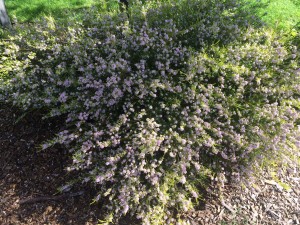UPDATE: In semi-related news, Starhawk announced early production of a movie version of The Fifth Sacred Thing. Click here. “Starhawk’s epic tale, set in 2048, California. In a time of ecological collapse, when the hideously authoritarian and corporate-driven Stewards have taken control of most of the land and set up an apartheid state, one region has declared itself independent: the Bay Area and points north.”
During WWI and WWII, citizens planted produce and herb gardens at private residences and public parks in the United States, United Kingdom, Canada and Germany. The goal was to keep civilians feed and free up the public food supply for soldiers. Victory gardens were a “morale booster”. Victory or liberty gardens became a part of daily life because the labor gave participants a sense of empowerment by contributing to the war effort and rewarded them with nutritious inexpensive food. (Wikipedia) “By 1943, Americans planted more than 20 million victory gardens — at homes and schools and in parks — that were reported to produce 8 million tons of food that one old film called ‘America’s hidden weapon.'” (LA Times)

IMAGE: Victory garden poster, World War II “Your victory garden counts more than ever!” Hand drawn vibrant colored vegetables in the foreground. Background of people in hats and overalls working in field rows on a sunny day with fluffy cloud. 1945 Artist: Morley US Agriculture Department. War Food Administration. Public Domain Wikipedia Commons.
In the past few years, there’s been a resurgence of victory gardens. Today victory gardens have two main purposes: providing food in a tough economy and environmentalism.
Artist Joe Wirtheim is the creative force behind The Victory Garden of Tomorrow. victorygardenoftomorrow.com/

IMAGE: Artists Joe Wirtheim. Used with his permission. “Break New Ground Plant an Urban Farm Garden” Poster reflects WWII victory garden style. Background of plants growing from urban skyscrapers and buildings. Foreground of person’s leg pushing a pitchfork into the earth. Image uses different shades of green and brown.
“The Victory Garden of Tomorrow is a self-commissioned poster campaign designed to channel the bold energy of historical poster propaganda. It is committed to civic innovation and social progress– better food, better gardens, better cities. It is artful advocacy for the modern homefront.”
“The campaign’s distinct style and wit draws from my fascination with World War II-era propaganda posters. Looking at them now, I feel they say so much about where America has been. I’ve combined that with the NYC World’s Fair of 1939 and its “World of Tomorrow” theme which had its own set of compelling advertising posters. Those exciting graphics spoke for America’s ambition to enter a better future; an ambition that contrasted with the Great Depression of the 1930’s. These two events said so much to me about our current state that I couldn’t help but create a modern campaign that asks to bring to life abilities that have seemed to lay dormant in the American character.”
People promote victory gardens to create awareness about the lack of green space in communities and the toll commercial farms have on our planet and our health. Chemical insect and weed killers and fertilizers have filled our water supply, food supply, and our bodies with harmful toxins. Monsanto has been doing this since the 1930s when they purchased a main provider of PCB chemicals. Click Here. Companies, such as Kellogg are jumping onto this gardening bandwagon. They are using “organic” fertilizers instead of manufactured. The kicker is they are buying LA city sewage. “Kellogg Garden Products and the Environmental Media Association are corporate partners. Kellogg contributes its products and support to EMA, and EMA greenwashes Kellogg’s brand name and thus its hidden sludge products.” That’s right folks. When Tony the tiger says “It’s great!” it really isn’t. Click here.
Enough of the depressing state of our life support system. The point is people are going back to basics and reconnecting with their surroundings by planting gardens. It’s happening in big cities and small communities. Houston, Missouri, a small town near me, has started a community garden and the local prison has a gardening program for inmates. Schools are starting gardening programs for students and purchasing produce from local farmers. “Farm to School connects schools (K-12) and local farms with the objectives of serving healthy meals in school cafeterias, improving student nutrition, providing agriculture, health and nutrition education opportunities, and supporting local and regional farmers. www.farmtoschool.org/
For information on the benefits and how to of starting a garden check out my post “Get Your Green On: Gardening for Everyone” www.patheos.com/community/paganswithdisabilities/2011/03/15/get-your-green-on-gardening-for-everyone-2/ In my home I have three altars: one in the office, my kitchen counter and stove, and my garden.
References and Resources:
LA Times “Victory gardens sprout up again” by Mary MacVean www.latimes.com/features/la-hm-victory10-2009jan10,0,5210624.story
minnpost.com “’Gardening angels’ organize new Victory Gardens to help the needy” by Cynthia Boyd www.minnpost.com/communitysketchbook/2011/03/31/27076/gardening_angels_organize_new_victory_gardens_to_help_the_needy
Houston Harold “Community garden opens in Houston” www.houstonherald.com/news/article_6543b928-5229-11df-8d8f-001cc4c002e0.html











